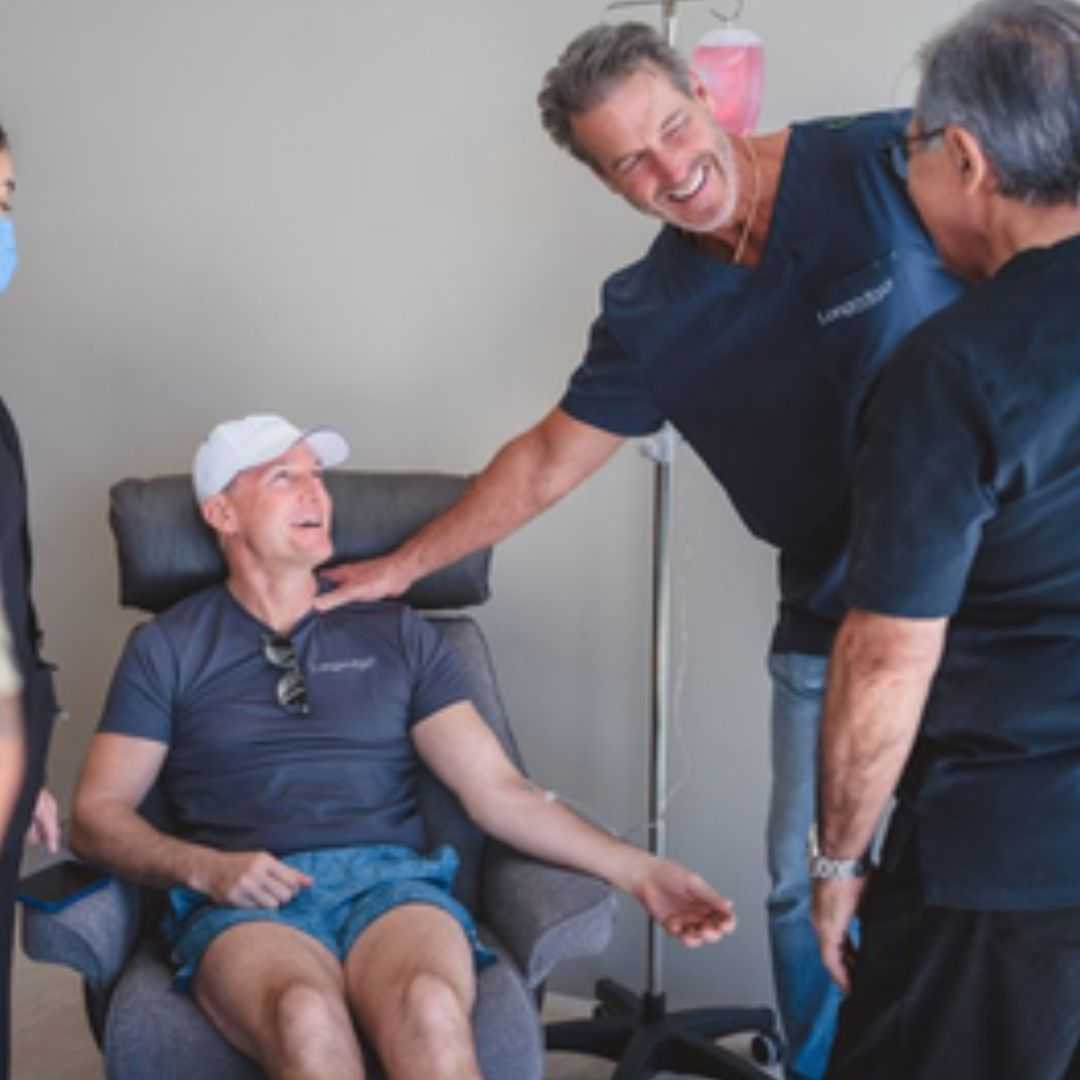
Radiotherapy: Your Guide to Advanced Cancer Treatment Options Abroad
Facing a cancer diagnosis is undoubtedly one of life's most challenging experiences. As you navigate treatment options, you might hear about radiotherapy – a powerful and often life-saving approach. For many, especially those seeking world-class care at a more accessible price or facing long wait times in their home country, exploring radiotherapy abroad has become a viable and attractive option. This comprehensive guide will demystify radiotherapy, explain its role in cancer treatment, and illuminate the benefits and considerations of pursuing this vital therapy through medical tourism.
Radiotherapy uses high-energy radiation to damage cancer cells and stop them from growing and dividing, while minimizing harm to surrounding healthy tissue. It's a precise treatment, often delivered by highly skilled specialists. Whether you're researching "how radiation therapy works," "what are the side effects of radiotherapy," or looking for "affordable cancer treatment overseas," this resource is designed to provide clarity and empower your decisions.
What is Radiotherapy and How Does It Work?
Imagine a highly precise, invisible beam capable of targeting and neutralizing specific threats. That's essentially how radiotherapy functions. It's a localized treatment, meaning it affects only the part of the body being treated. The radiation damages the genetic material (DNA) inside cancer cells. When their DNA is damaged, cancer cells can't repair themselves, grow, or divide, leading to their eventual death. While some healthy cells might also be affected, they are generally better at recovering from the radiation damage than cancer cells.
The goal of radiotherapy is to deliver the highest possible dose to the cancer cells while sparing as much surrounding healthy tissue as possible. This requires meticulous planning by a team of specialists, including radiation oncologists, medical physicists, and dosimetrists. They use advanced imaging techniques like CT, MRI, and PET scans to precisely map the tumor and surrounding organs, ensuring the radiation is delivered with pinpoint accuracy.
Which Cancers Can Radiotherapy Treat? (Conditions Treated)
Radiotherapy is a versatile tool in oncology, used for many types of cancer, at different stages, and for various purposes. It's often asked, "What kind of cancers can radiation treat?" The list is extensive, including:
- Breast Cancer: Often used after lumpectomy to reduce recurrence risk, or for palliative care in advanced stages.
- Prostate Cancer: A common primary treatment option, sometimes combined with hormone therapy.
- Lung Cancer: Can be curative for early-stage lung cancer or used to relieve symptoms in more advanced cases.
- Head and Neck Cancers: Frequently used as a primary treatment, sometimes with chemotherapy.
- Cervical Cancer: A standard treatment, often combined with chemotherapy.
- Colorectal Cancer: Used before or after surgery, or to manage advanced disease.
- Brain Tumors: Essential for treating both primary and metastatic brain cancers.
- Skin Cancer: Effective for certain types, especially in areas where surgery might be disfiguring.
Radiotherapy can be used with curative intent (to eliminate the cancer), adjuvantly (after other treatments like surgery to kill residual cells), neoadjuvantly (before surgery to shrink a tumor), or palliatively (to relieve symptoms like pain or bleeding in advanced cancer).
What Are the Different Types of Radiotherapy?
When patients ask, "What types of radiation therapy are there?" they're often surprised by the variety. The primary categories are:
- External Beam Radiation Therapy (EBRT): This is the most common type. A machine outside the body directs radiation at the cancer. Modern EBRT uses highly sophisticated techniques:
- 3D Conformal Radiation Therapy (3D-CRT): Shapes radiation beams to match the tumor's shape.
- Intensity-Modulated Radiation Therapy (IMRT): Delivers radiation in varying intensities, allowing doctors to precisely sculpt the radiation dose to the tumor, minimizing exposure to healthy tissue.
- Image-Guided Radiation Therapy (IGRT): Uses imaging (like CT scans) during treatment to ensure the patient and tumor are in the exact same position for each session.
- Stereotactic Body Radiation Therapy (SBRT) / Stereotactic Radiosurgery (SRS): Delivers very high doses of radiation in fewer sessions (1-5), often used for small, isolated tumors in the brain (SRS) or body (SBRT).
- Proton Therapy: Uses protons instead of X-rays. Protons deposit most of their energy at a specific depth and then stop, potentially reducing radiation to tissues beyond the tumor.
- Internal Radiation Therapy (Brachytherapy): Involves placing a radioactive source directly inside or next to the tumor. This delivers a high dose of radiation to a small area. It can be temporary (high-dose rate) or permanent (low-dose rate).
- Systemic Radiation Therapy: Uses radioactive drugs given by mouth or injection, which travel throughout the body to find and kill cancer cells. Examples include radioactive iodine for thyroid cancer.
Who is a Candidate for Radiotherapy? (Eligibility & Indications)
Determining if radiotherapy is the right treatment for you involves a thorough evaluation by a multidisciplinary team. Key factors considered include:
- Type and Stage of Cancer: Some cancers are more responsive to radiation than others. The stage of cancer (how much it has grown or spread) also plays a crucial role.
- Location of the Tumor: Proximity to vital organs or sensitive structures can influence the feasibility and type of radiation used.
- Overall Health and Medical History: Your general health, presence of other medical conditions, and previous treatments are all assessed. Patients need to be well enough to tolerate the daily treatments.
- Treatment Goals: Whether the aim is to cure the cancer, prevent recurrence, or relieve symptoms will guide the treatment plan.
- Potential Benefits vs. Risks: The team weighs the expected effectiveness of radiotherapy against potential side effects and risks.
It’s crucial to have an open discussion with your radiation oncologist about all these factors to understand if radiotherapy is appropriate for your specific situation. They will also discuss "who is not a good candidate for radiation therapy," which might include patients with severe pre-existing conditions or very widespread cancer where localized treatment would not be effective.
Preparing for Your Radiotherapy Treatment
The preparation phase is critical for the success and safety of your radiotherapy. It typically involves a "simulation" appointment:
- Simulation: This is a planning session where you'll lie on a table in the exact position you'll be in during your daily treatments. CT scans (and sometimes MRI or PET scans) are taken to create a 3D map of your tumor and surrounding anatomy.
- Immobilization Devices: Depending on the treatment area, you might have a custom mold, mask, or headrest created to help you stay still and ensure consistent positioning during each session.
- Skin Marks: Tiny, permanent tattoo dots or temporary ink marks may be placed on your skin to guide the radiation therapists in lining up the treatment machine.
- Dietary and Lifestyle Advice: You might receive specific instructions regarding diet, hydration, and avoiding certain activities or products during treatment to minimize side effects.
- Medication Review: Discuss all your current medications, supplements, and vitamins with your team, as some might interact with radiation.
- Asking Questions: This is your opportunity to ask about the treatment schedule, potential side effects, and how to manage them.
Thorough preparation ensures that the radiation is delivered precisely and effectively, while protecting healthy tissues as much as possible.
What to Expect During Radiotherapy Sessions?
For many patients, the thought of daily radiation sessions can be daunting. However, understanding the routine can help alleviate anxiety. When you ask, "What happens during a radiation treatment?" here’s a typical scenario:
- Arrival: You'll arrive at the radiation therapy department for your scheduled appointment.
- Positioning: A radiation therapist will escort you to the treatment room and help you lie down on the treatment couch in the exact position determined during your simulation. They will use your skin marks and immobilization devices to ensure accuracy.
- Machine Setup: The therapist will leave the room and operate the linear accelerator (Linac) from a control area, monitoring you via camera and intercom.
- Treatment Delivery: The machine will move around you to deliver radiation from different angles. You won't feel the radiation itself, but you'll hear the machine operating. The actual radiation delivery typically lasts only a few minutes, though the entire session, including positioning, might take 10-30 minutes.
- Communication: You can communicate with the therapists at any time if you feel uncomfortable or need to pause the treatment.
- Frequency: Radiotherapy is often given in small daily doses (fractions) over several weeks (e.g., 5 days a week for 2-7 weeks), allowing healthy cells to recover between treatments.
It's important to remember that you are not radioactive after external beam radiation, and it's safe to be around others.
Radiotherapy Recovery Time and Post-Treatment Expectations
After completing your course of radiotherapy, your body needs time to heal. Recovery isn't always immediate, and side effects can sometimes linger or even appear a few weeks after treatment ends. When thinking about "how long does it take to recover from radiation therapy," consider these points:
- Acute Side Effects: Most acute (short-term) side effects, like fatigue, skin changes, and localized irritation, usually begin a few weeks into treatment, peak towards the end, and typically resolve within several weeks to a few months after the last session.
- Chronic Side Effects: Some side effects, known as chronic or late effects, can develop months or even years after treatment. These are less common and depend heavily on the treated area and radiation dose. Your medical team will monitor you for these.
- Fatigue: This is one of the most common and persistent side effects. It can last for weeks or months after treatment, and managing it with rest, light exercise, and good nutrition is important.
- Skin Care: Continued gentle skin care in the treated area is essential until it fully heals.
- Follow-up Appointments: Regular follow-up appointments with your radiation oncologist are crucial to monitor your recovery, assess the effectiveness of the treatment, and manage any ongoing or new side effects.
Remember that everyone's recovery journey is unique. Patience, self-care, and open communication with your medical team are key.
Understanding Radiotherapy Risks and Side Effects
While radiotherapy is a powerful cancer fighter, it's important to be aware of potential side effects. These vary greatly depending on the part of the body being treated, the dose of radiation, and individual patient factors. Common side effects include:
- Fatigue: A widespread feeling of tiredness, often cumulative throughout treatment.
- Skin Changes: In the treated area, skin may become red, dry, itchy, sensitive, and eventually peel, similar to a sunburn.
- Hair Loss: Occurs only in the area receiving radiation. For example, radiation to the head will cause scalp hair loss, but radiation to the pelvis will not. Hair loss may be temporary or permanent.
- Localized Effects:
- Head and Neck: Sore throat, difficulty swallowing, dry mouth, taste changes.
- Chest: Sore throat, difficulty swallowing, cough, shortness of breath.
- Abdomen/Pelvis: Nausea, vomiting, diarrhea, bladder irritation (frequent urination, discomfort).
Most acute side effects are temporary and managed with medication and supportive care. Your medical team will provide guidance on how to alleviate symptoms and will closely monitor your condition. It’s important to report any new or worsening symptoms promptly.
Worldwide Radiotherapy Cost Comparison
One of the primary drivers for patients seeking "radiation therapy abroad" is the significant cost difference. The "cost of radiotherapy" can be prohibitive in many Western countries, particularly for those without comprehensive insurance or facing high deductibles. Here's a general comparison (prices are estimates and can vary based on cancer type, number of fractions, and specific technology used):
| Country | Estimated Radiotherapy Cost (per full course, USD) | Notes |
|---|---|---|
| United States | $15,000 - $100,000+ | Highly advanced technology, but very high costs; significant variation by state/facility. |
| United Kingdom | $10,000 - $50,000+ (private) | NHS covers most, but private costs can be high; waiting times can be an issue. |
| India | $5,000 - $15,000 | Leading medical tourism destination; excellent quality, highly affordable. |
| Turkey | $7,000 - $20,000 | Modern facilities, skilled professionals, competitive pricing, good location for Europe/MENA. |
| Mexico | $8,000 - $25,000 | Proximity to USA; growing medical tourism sector with good quality options. |
| Thailand | $7,000 - $18,000 | Renowned for medical tourism; high-quality care, excellent patient experience. |
These figures are indicative and can change. Always seek a personalized quote for precise costs. The significant savings in countries like India, Turkey, and Thailand often include packages that cover accommodation, local transport, and translator services, making the overall cost even more appealing.
Why Consider Radiotherapy Abroad? (Medical Tourism Benefits)
The decision to travel for medical treatment is significant, but for many, the advantages of seeking "cancer treatment abroad" for radiotherapy are compelling:
- Significant Cost Savings: As seen in the table above, the cost of radiotherapy can be dramatically lower in popular medical tourism destinations, without compromising on quality.
- Access to Advanced Technology: Many leading international hospitals boast state-of-the-art linear accelerators, proton therapy centers, and advanced imaging for precise treatment planning that might not be readily available or affordable in a patient's home country.
- Reduced Waiting Times: In countries with universal healthcare systems, long waiting lists for specialist consultations or treatment can delay vital care. Abroad, immediate access to treatment is often possible.
- World-Class Facilities and Expertise: Many medical tourism hubs have internationally accredited hospitals staffed by highly experienced, often Western-trained, radiation oncologists and medical teams.
- Personalized Care and Attention: Hospitals catering to international patients often provide comprehensive support, including translators, dedicated patient coordinators, and a focus on comfort and a holistic healing environment.
Choosing a Destination: Which Countries Offer the Best Value for Radiotherapy?
When researching "best countries for cancer treatment," several nations consistently emerge as leaders in medical tourism for radiotherapy:
- India: A powerhouse in medical tourism, offering world-class oncology centers, highly experienced doctors, and some of the most competitive prices for advanced radiotherapy.
- Turkey: Strategically located, Turkey boasts modern hospitals with cutting-edge technology and a strong focus on international patient services, making it a popular choice for European and Middle Eastern patients.
- Mexico: Convenient for North American patients, Mexico has several internationally accredited hospitals offering high-quality radiotherapy at a fraction of US costs.
- Thailand: Known for its exceptional hospitality and advanced medical infrastructure, Thailand provides excellent radiotherapy services combined with a restorative environment for recovery.
- South Korea: Renowned for its technological advancements, South Korea offers highly sophisticated cancer treatments, including proton therapy, with world-leading success rates.
When selecting a destination, consider factors beyond cost, such as hospital accreditation (JCI, ISO), doctor qualifications, language support, and overall patient experience.
Navigating Radiotherapy Abroad: Safety, Quality, and Logistics
Embarking on "radiation therapy medical tourism" requires careful planning. Here's how to ensure a safe and successful journey:
- Research and Accreditation: Choose hospitals with international accreditation (e.g., Joint Commission International - JCI), which indicates adherence to global healthcare standards.
- Doctor Credentials: Verify the qualifications, experience, and specialization of the radiation oncologist and their team. Many international doctors have Western training.
- Medical Tourism Facilitators: Reputable services like PlacidWay can streamline the process, helping you find accredited hospitals, get quotes, arrange travel logistics, and provide translation services.
- Communication: Ensure clear communication channels with your medical team. Many hospitals have staff fluent in English or offer translation services.
- Travel Logistics: Plan for visas, accommodation, local transportation to daily treatment sessions, and meals. Consider the length of your stay (radiotherapy typically involves multiple weeks of daily treatments).
- Post-Treatment Care Plan: Discuss with your foreign medical team how your follow-up care will be managed upon returning home. Ensure they provide comprehensive reports for your local doctors.
- Support System: Consider traveling with a companion for support during your treatment journey.
What are Patient Success Stories from Radiotherapy Abroad?
The landscape of medical tourism is rich with inspiring stories of individuals who have sought and found successful radiotherapy treatment abroad. These patient testimonials often highlight several key themes:
- Affordable Access to Lifesaving Care: Many patients share how they were able to afford a full course of treatment, including advanced techniques like SBRT or IMRT, which would have been financially impossible in their home countries. For example, a patient from the US might share their experience of receiving successful prostate cancer radiotherapy in Mexico for a fraction of the cost, achieving complete remission.
- Access to Cutting-Edge Technology: Stories often feature patients who traveled for specialized treatments like proton therapy, unavailable or with long wait times at home. A parent might recount their child's successful brain tumor treatment with proton therapy in South Korea, highlighting the reduced side effects compared to traditional radiation.
- Exceptional Patient Experience: Beyond the medical success, many patients speak glowingly of the personalized attention, cultural sensitivity, and warm hospitality they received. Stories of dedicated patient coordinators, English-speaking staff, and comprehensive packages that eased the burden of travel and accommodation are common. A patient from the UK might describe their experience with breast cancer radiotherapy in Turkey, praising the efficiency, modern facilities, and compassionate nursing staff.
- Renewed Hope and Quality of Life: Ultimately, these success stories are about extending lives, shrinking tumors, managing pain, and improving overall quality of life. Patients often express immense gratitude for the opportunity to receive timely and effective treatment, leading to a renewed sense of hope and a chance to spend more quality time with loved ones.
These narratives underscore that for many, medical tourism for radiotherapy isn't just about cost savings; it's about gaining access to advanced care that profoundly impacts their health and future.
Your Path to Healing Begins Here
Navigating a cancer diagnosis and choosing the right treatment is a deeply personal journey. Radiotherapy offers a powerful weapon against cancer, and exploring options abroad can open doors to high-quality, affordable, and timely care. With careful research and the right support, medical tourism for radiotherapy can be a beacon of hope for many patients worldwide.
Take the Next Step with PlacidWay
Ready to explore treatment options abroad? Discover top clinics, compare prices, and get a free quote tailored to your needs with PlacidWay.
Cancer Treatment Abroad, Breast Cancer, Lung Cancer










Share this listing